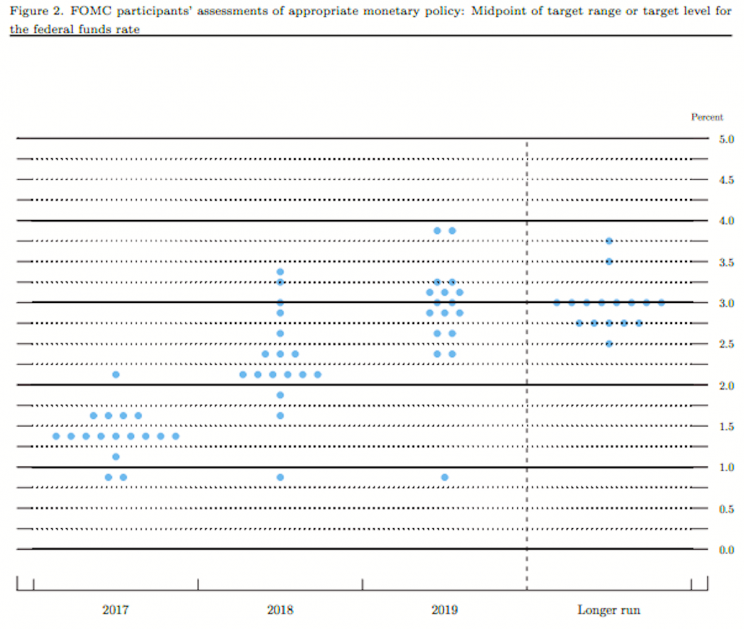Fed raises rates, sees two more hikes this year
For the first time this year, the Federal Reserve raised interest rates, a widely expected move following strengthening economic reports and signals from Fed officials.
After its two-day policy meeting, the Federal Open Market Committee voted to raise the range of the federal funds rate to 0.75% and 1.00%, citing progress in labor market growth, business fixed investment and inflation.
“In view of realized and expected labor market conditions and inflation, the Committee decided to raise…the fed funds rate,” the central bank wrote in its statement.
One member of the committee, Minneapolis Fed President Neel Kashkari, voted against the decision, preferring to keep the federal funds rate between 0.50% and 0.75%. Kashkari is a new voting member of the FOMC this year.
The Fed’s cautious, yet generally positive, economic statement follows a slew of improving data, including better-than-expected ISM manufacturing growth, strong consumer confidence reports and solid payroll gains. The unemployment rate has hovered around 5% for the past year—a level many economists consider to be near full employment.

In its statement, the Fed noted that inflation is “moving close to the Committee’s 2 percent longer-run objective,” but that “excluding food and energy prices, inflation was little changed and continued to run somewhat below 2 percent.”
Inflation has started to show signs of improvement after running below the Fed’s 2% target for years. The personal consumption expenditures price index, the Fed’s preferred measure of price inflation, increased 1.9% in January from the year before. Another measure of inflation, the Consumer Price Index, rose 2.7% year-over-year in February.
The Fed also reiterated its balance of risks statement, noting, “near-term risks to the economic outlook appear roughly balanced,” meaning that the economy is no more likely to surprise to the downside than the upside.
Fed projections and dot plots
The Fed’s expectations for GDP growth increased slightly to 2.1% in 2018, while forecasts for unemployment remained mostly the same, with officials expecting the rate to fall to 4.5% by 2019. Officials raised their short-term outlook for core PCE inflation to 1.9% this year.
While projections for the federal funds rate rose across the board, the total number of expected rate hikes in 2017 remained unchanged with three quarter-point raises. In December, Fed officials raised their forecasts for the pace of rate hikes after the election of Donald Trump, which sent inflation expectations surging.
Officials also forecast three rate hikes in 2018, with the rate reaching its long-run goal of 3.0% in 2019.

More coverage on the Fed from Yahoo Finance:
